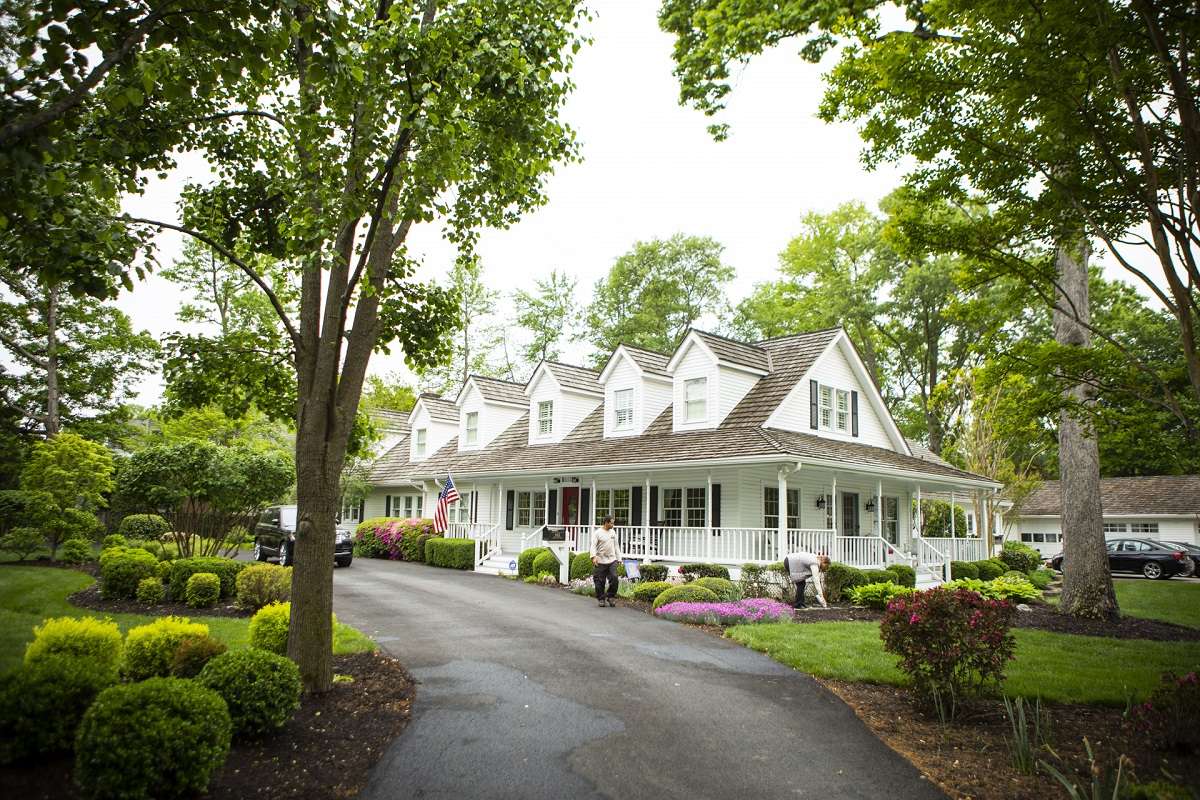

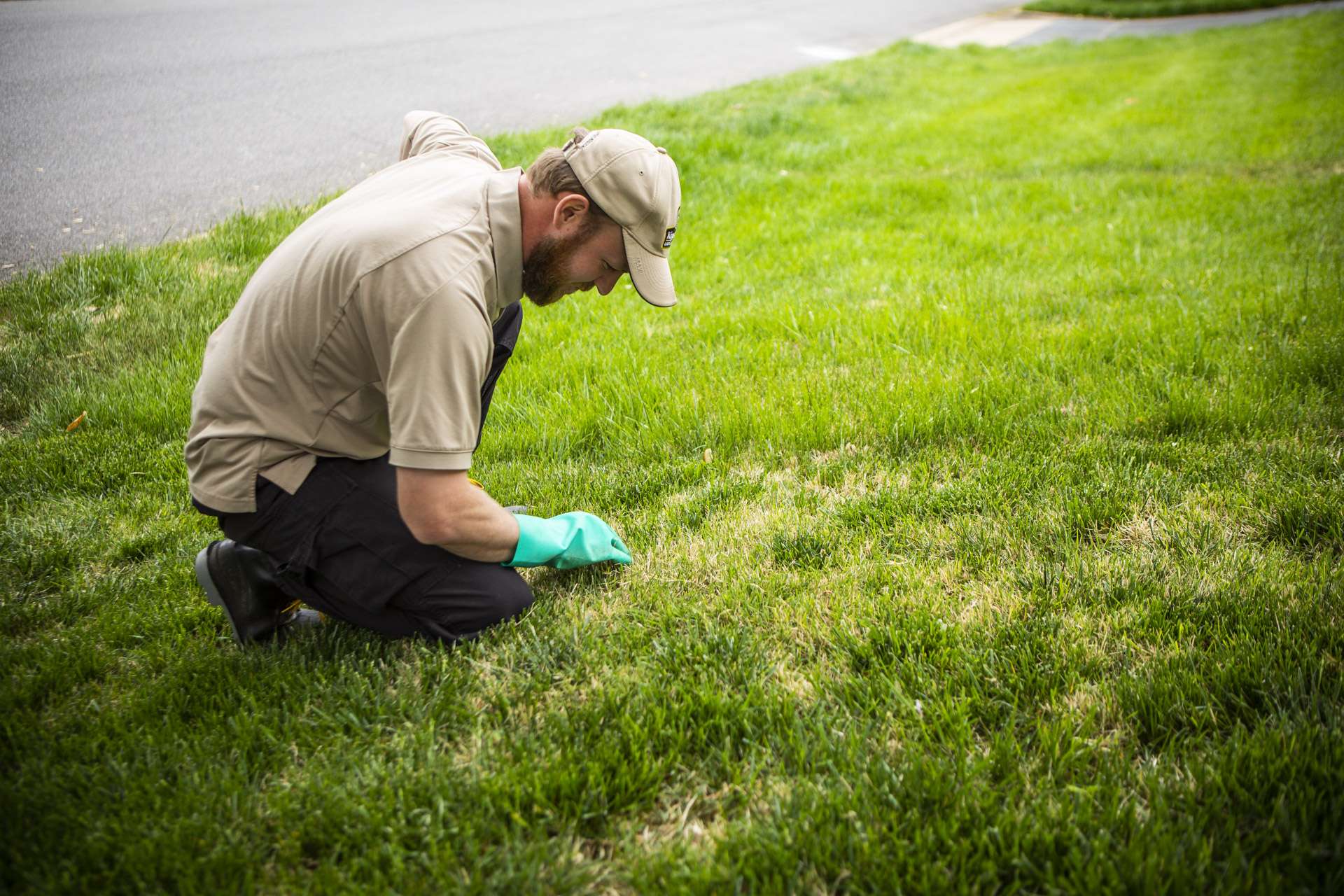
Some lawn problems are easily noticeable and diagnosed. However, other problems, like lawn grubs in Virginia lawns, can be occurring right under your nose without you even knowing it.
That’s because sneaky lawn grubs hide within your lawn’s subsurface level and feed upon its roots! Eventually, the areas that grubs have munched on will begin to turn brown and die.
Since grubs aren’t easily spotted, by the time you recognize you have a problem, it’s already too late.
For that reason, it’s important to understand some of the signs of grubs in your lawn. The earlier that you can spot trouble, the better shape your lawn will be in.
Before we talk about signs of grubs in your lawn, let us explain what this pest is and why it’s such a problem.
“Grub” is the collective name for several species of beetles in the larval stage. These are tiny, c-shaped creatures that have the power to do a lot of damage. That’s because after hatching in the lawn, they feed upon the roots of your grass.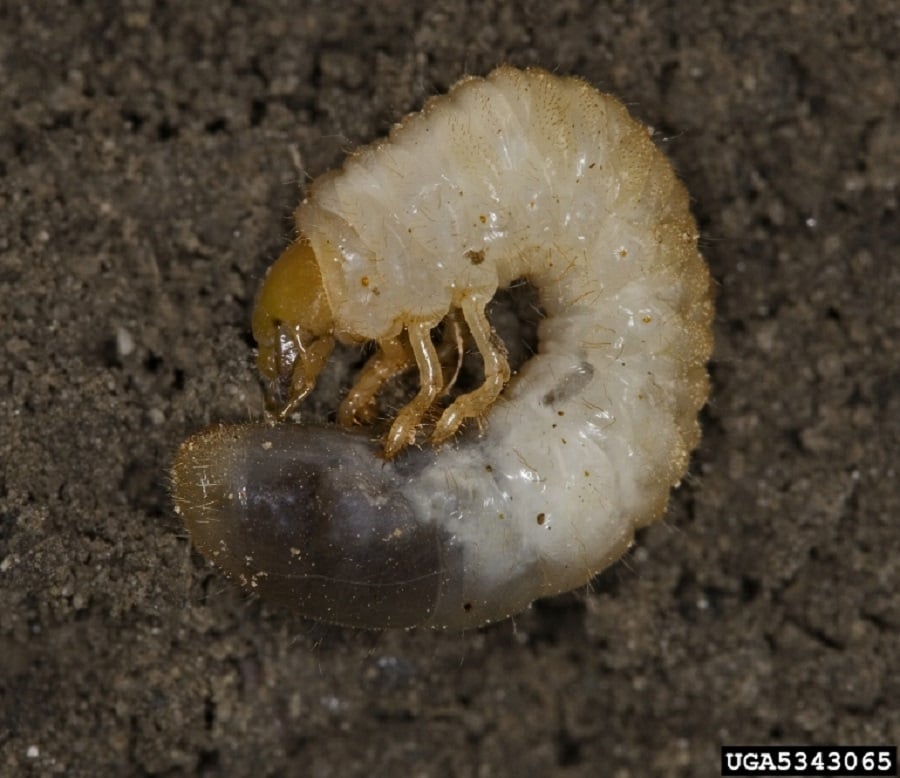
Beetles lay their eggs in summer, so the grubs are born directly in the soil and typically start feeding on the roots of your grass around mid-August in Virginia. Damage can occur rapidly, particularly if you have a larger number of grubs.
The biggest concern with this is that the damage might be happening without you noticing. But there are some signs that you can watch out for.
Here are a few potential signs that you might have grubs in your lawn.
An early sign of lawn grubs can sometimes be increased animal activity. For instance, you might suddenly notice that there are a lot more birds hanging around on your lawn. Other animals that feed on lawn grubs include gophers and moles.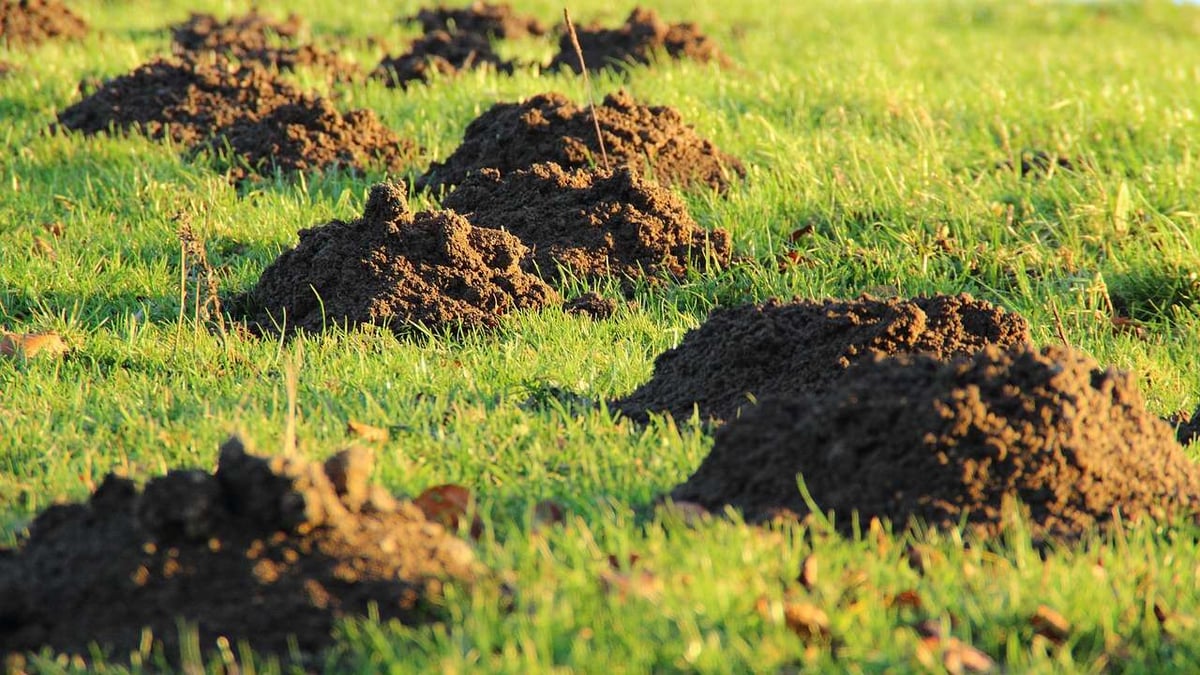
Of course, even if you don’t see the animal activity, you might notice that you have animal damage (such as tunneling or a dug-up lawn). This is a potential sign that you could have lawn grubs.
Another telltale sign of lawn grubs is the grass pulling up. This is a little more concerning because it means that grubs have already been actively feasting on the roots of your grass. As the grass blades become detached from the roots, they will pull up easily.
In a worst-case scenario, the lawn might actually be able to “roll up” like a carpet because there is no longer anything holding it down.
Grubs can also cause the lawn to turn brown in areas where they’ve feasted. If you notice that you have brown spots on your lawn, it could be that those areas have grubs.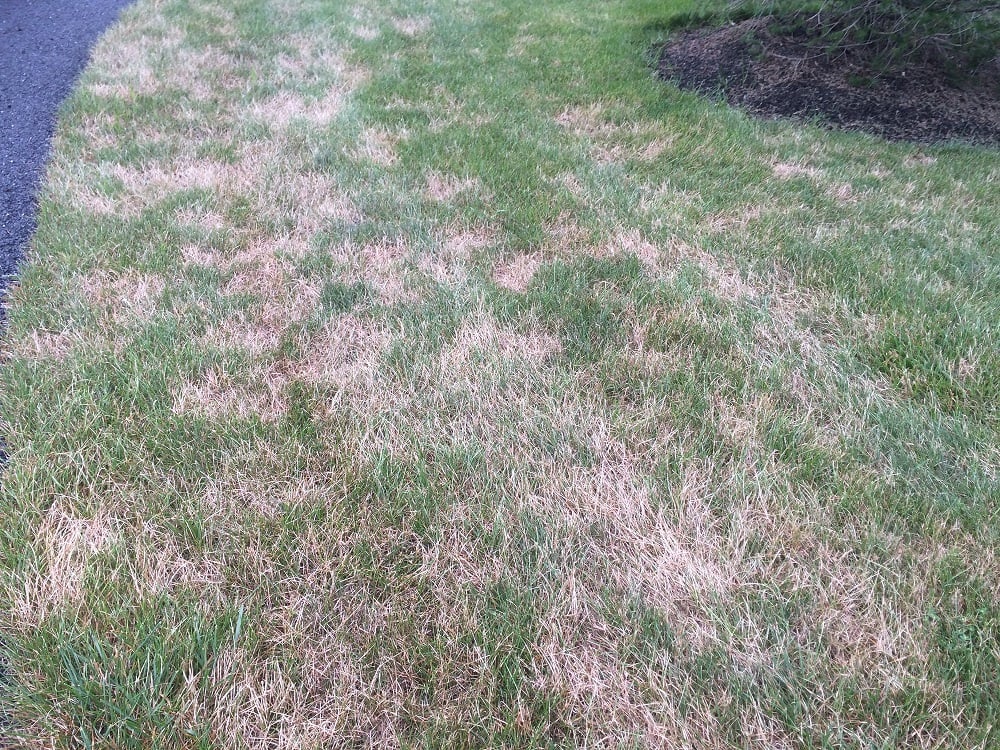
Brown spots can have other causes, too. Turf disease, drought stress, and surface-feeding insects can also cause areas of the lawn to turn brown. It’s important to get to the bottom of what’s going on so that you can implement the proper solution.
Before taking any action, you’ll need to figure out what’s going on. Sometimes lawn problems can have you feeling a bit like a detective. We get it! And we know it can be stressful. But a proper diagnosis is the only way to implement the best treatment option for your lawn.
If you think that you might be dealing with lawn grubs, you can do a little bit of sleuthing. Get down on your lawn and pull the grass apart to examine the surface. Unlike certain pests, grubs ARE big enough to spot. Remember, they look like white, c-shaped creatures.
If you determine that you have lawn grubs, you obviously need to implement a grub lawn treatment. There are curative products that work as a treatment for lawn grubs.
However, you’ll be in much better shape if you take steps to prevent grubs in the first place. We recommend preventative grub products that will prevent grubs from hatching.
This is important because grub damage can be significant when it is not caught early. Any grass that you have already lost to grubs will have to be regrown. Aeration and overseeding can be used in areas that have already experienced significant grub damage. Then, going forward, you can implement preventative control.
Like any other potential problem, your best bet is to be working with a lawn care professional that will implement the best solutions.
At Kingstowne Lawn & Landscape, we include pollinator-safe grub control in all of our lawn care programs. Because grub damage can be so swift (and so serious), we know that prevention is key. Grub damage is simply a risk that we just don’t want to take.
However, if you are reading this article because you already have a grub problem, you’ll want to connect with a lawn care pro right away. You’ll want to implement a curative product and come up with a plan for any turf areas that have already died.
At Kingstowne Lawn & Landscape, we want you to be able to feel confident that your lawn is protected. Thinking about lawn grubs destroying your lawn is simply not something that you want to worry about.
Fortunately, by choosing to work with Kingstowne, you can gain peace of mind that we’re on top of it. In addition to lawn grubs, we’re also tackling other lawn problems as they come up.
By choosing to work with Kingstowne, we can provide the comprehensive solutions that you are looking for because we have answers for problems like lawn grubs. This will allow you to take back your yard from unwanted visitors and get back to enjoying your property to the fullest.
If you’re ready to know your property will be protected from lawn-destroying insects, request your quote, choose from 3 lawn care package options and relax as you get the royal treatment.

Since 1997, Krisjan has led the Kingstowne team with one simple philosophy, treat every customer like the “only” customer. His passionate pursuit of impeccable customer service has resulted in 24 successful years and a thriving company with over 85 employees, helping thousands of homeowners in the Alexandria, Arlington, and Springfield, VA area get what they want - a worry-free property they can be proud of.


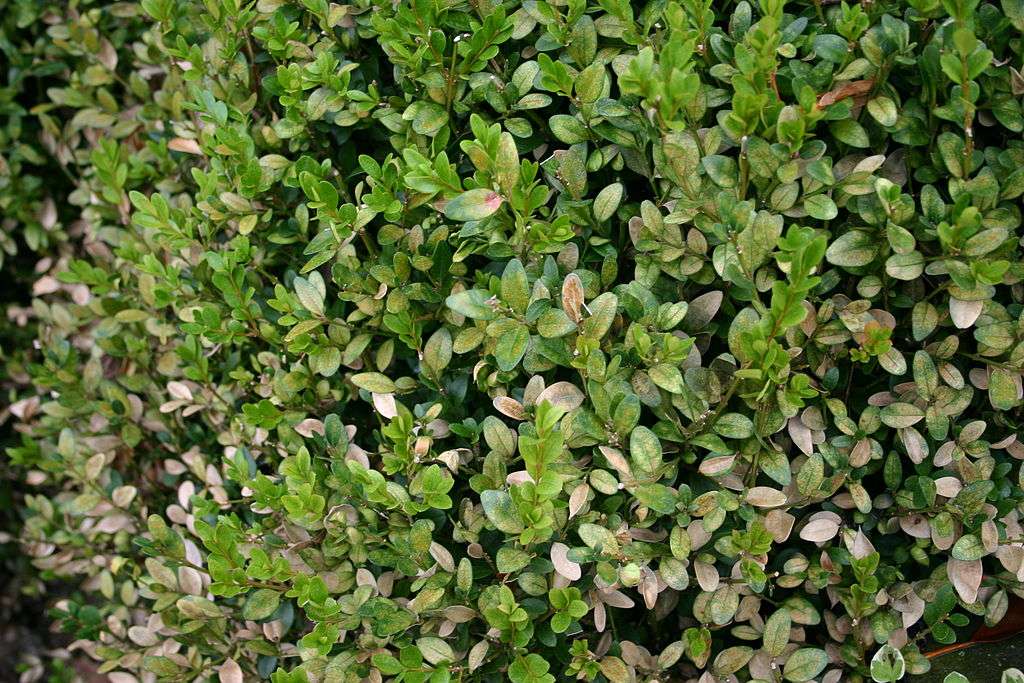

If You're Looking For a Sign, This is It.
Seriously, that lawn isn't getting any better on it's own. Mrs. Jones just called the HOA on you